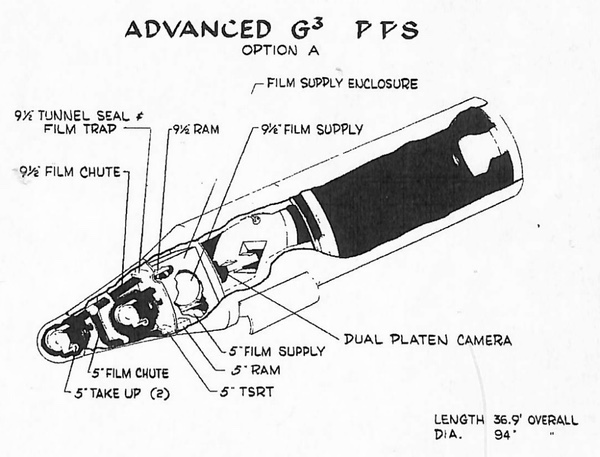Advanced Gambit and VHRby Philip Horzempa
|
| One is left to ponder the logic that led to the AG3 proposal. |
The mystery of the NRO’s Very High Resolution (VHR) projects was analyzed recently by Dwayne Day (see “God’s eye view: HEXADOR and the very high resolution satellite”; The Space Review, October 7, 2019). He points out that with the cancellation of MOL in 1969, the NRO no longer had a VHR capability. The agency appeared to be considering options for satellites that would produce images with a resolution of 10 centimeters (4 inches). The Advanced Gambit appears to have been one option that was seriously studied. The NRO overview of the AG3 summarized what would be needed to carry out this project. It concluded that existing facilities, for the most part, were adequate. Some tweaks were necessary, such as upgrading the Titan IIIB by adding Algol strap-on rockets.
The AG3 camera (KH-10G for now) had a primary mirror with a diameter of 178 centimeters (70 inches), nearly identical to that of the Dorian/MOL KH-10. The AG3 camera had a focal length of 711 centimeters (280 inches), compared with 445 centimeters (175 inches) for the KH-8. That may have produced images with a wider angle of view than the Dorian KH-10, but still with superb resolution. There were two design options for the Advanced Gambit. The PPS (Photographic Payload System) was the same, but option A included two film return capsules while option B would use three such capsules, Mark V SRVs from the standard Gambit-3.
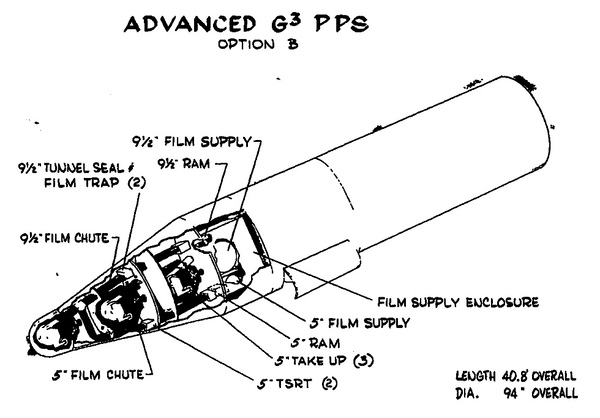 Option B for Advanced Gambit (credit: NRO) |
The heft of the Advanced Gambit, as compared with a standard Gambit-3, can be seen in this NRO illustration.
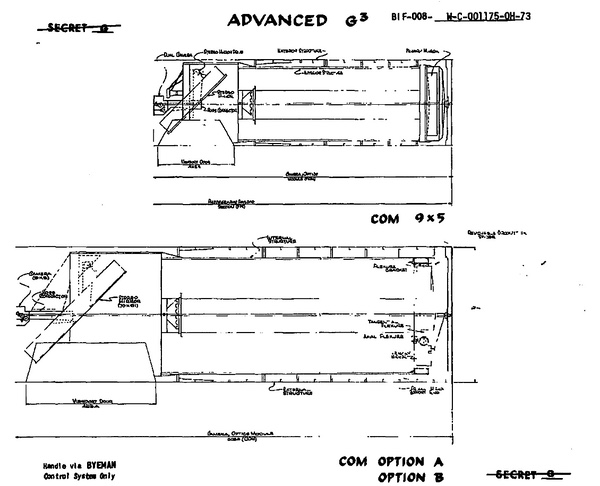 Standard Gambit-3 vs. Advanced Gambit (credit: NRO) |
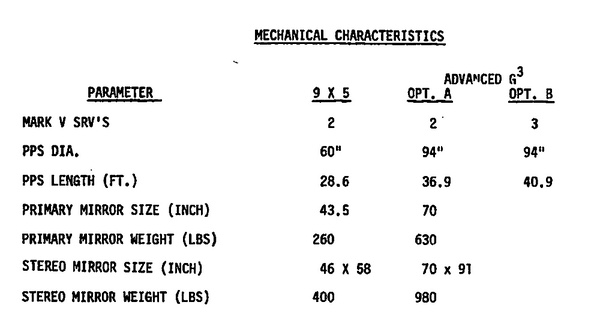 Gambit-3 (9 x 5) vs. Advanced G3 hardware dimensions (credit: NRO) |
One noticeable entry in this table is the weight—285 kilograms (630 pounds)—of the AG3’s primary mirror. By contrast, the main mirror for the KH-10 tipped the scales at 565 kilograms (1,250 pounds). A 70-inch mirror with half the weight of MOL’s camera may have been what allowed the AG3 satellite to be a feasible option.
The Advanced G3 (AG3) can be viewed, in a manner of speaking, as a more compact version of the Dorian/MOL spacecraft. One main difference was the length of the optical assembly. For MOL, it was about 11.3 meters (37 fee)t long, whereas in the AG3 camera the optical path from main mirror to guide mirror is about 8.5 meters (28 feet).
The AG3’s camera would use a Ross f/4 lens that would allow a shorter vehicle length. In turn, that would translate into a lower mass and improved vehicle dynamics. The AG3 could dive as low as 120–130 kilometers (65–70 nautical miles) at perigee in an effort, one can assume, to obtain the best resolution possible.
| The Advanced G3 (AG3) can be viewed, in a manner of speaking, as a more compact version of the Dorian/MOL spacecraft. |
The NRO documents note that existing facilities could manufacture a 230-centimeter (90-inch) mirror. That would be an important factor for the AG3’s steering mirror of 70 x 90 inches. The document also points out that a camera with an aperture of 70 inches is compatible with existing facilities. This may be a nod to the development of the KH-10 with exactly that aperture.
In his 2009 MOL article (see “Mirrors in the dark”, The Space Review, May 11, 2009), Dwayne Day mused about the holes in the center of the 70-inch mirrors donated to the MMT (Multiple Mirror Telescope) observatory. That puzzling feature does not correspond to what is known about the design of the MOL’s KH-10 optics. However, in the illustrations of the Advanced Gambit, the primary mirror does appear to have a hole in its center.
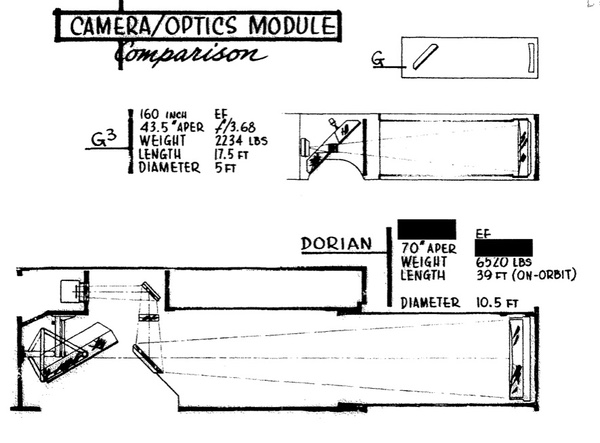 Gambit-1 and G-3 vs. Dorian Optics (credit: NRO) |
 Dorian/MOL payload module (credit: NRO) |
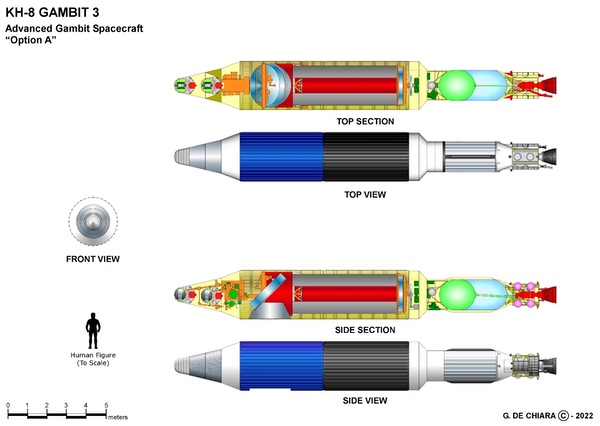 Advanced Gambit-3 option A cross section (credit: Giuseppe De Chiara) |
The Advanced Gambit-3 is depicted in a new series of illustrations created by Giuseppe De Chiara. The Advanced Gambit can be compared with the standard Gambit-3 vehicle by way of a previous rendering by Giuseppe De Chiara (approximately the same scale).
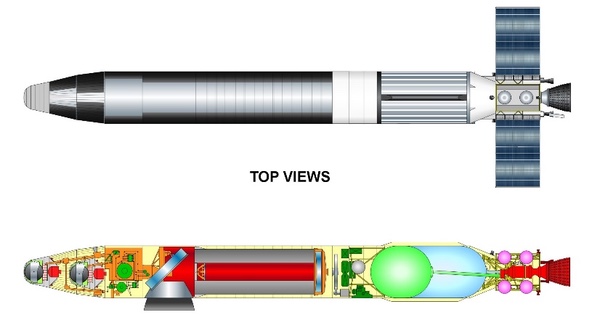 Gambit-3 with KH-8 camera (credit: Giuseppe De Chiara) |
These documents were in response to the author’s Freedom of Information Act (FOIA) request and contain another surprise. Besides the Advanced Gambit, they reveal a previously unknown variant of the Titan IIIB. It is not given a designation but resembles, to some degree, the Titan IIIBAS2 rocket (a version that included Algol strap-on rockets and a Centaur upper stage).
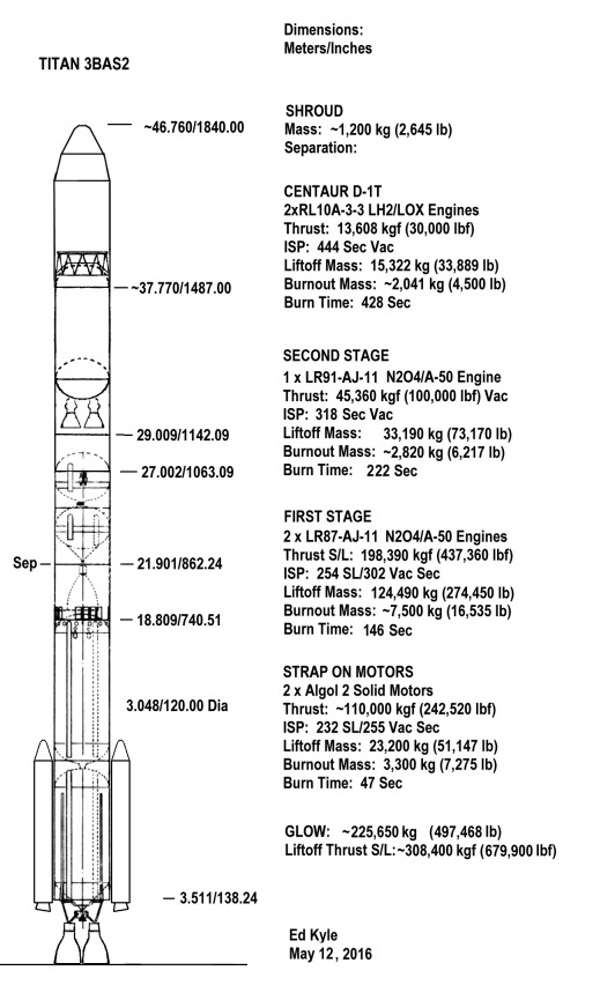 Titan IIIBAS2 rocket concept. (credit: Ed Kyle) |
The Advanced Gambit would be substantially heavier than the standard G3. To loft this vehicle, an augmented Titan-Agena rocket was needed. A total of six Algol-III strap-on rockets would attach to the Titan II first stage. The combined liftoff thrust, with the twin Aerojet engines on the Titan first stage, would be about 4.9 million newtons (1.1 million pounds-force).
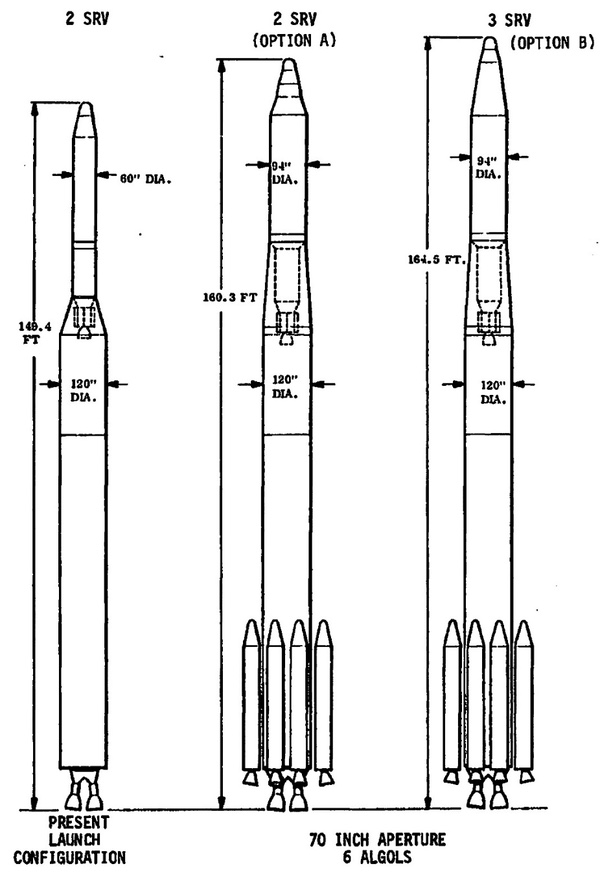 Titan IIIB/Agena vs. uprated Titan IIIB with Algol SRM assist (credit: NRO) |
Since the Advanced Gambit would be almost 2.4 meters (8 feet) in diameter, as opposed to the standard 1.5 meters (5 feet), a launch adapter would be used. This would encapsulate the entire Agena rocket module that was part of the Gambit satellite. Details of this adapter are shown in this NRO document.
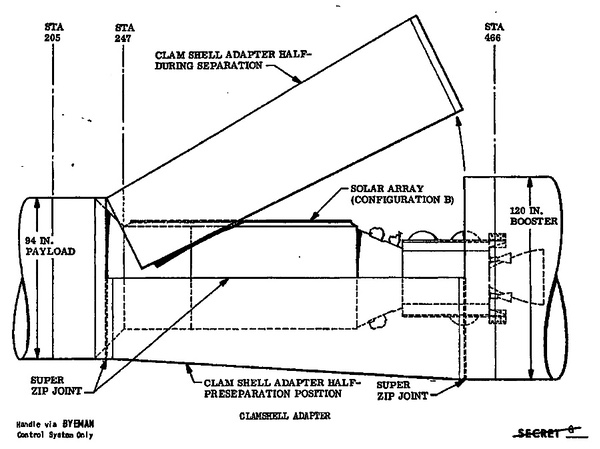 Booster-Agena adapter for uprated Titan-3B (credit: NRO) |
This newly revealed variant of the Titan IIIA rocket has also been depicted by Giuseppe De Chiara.
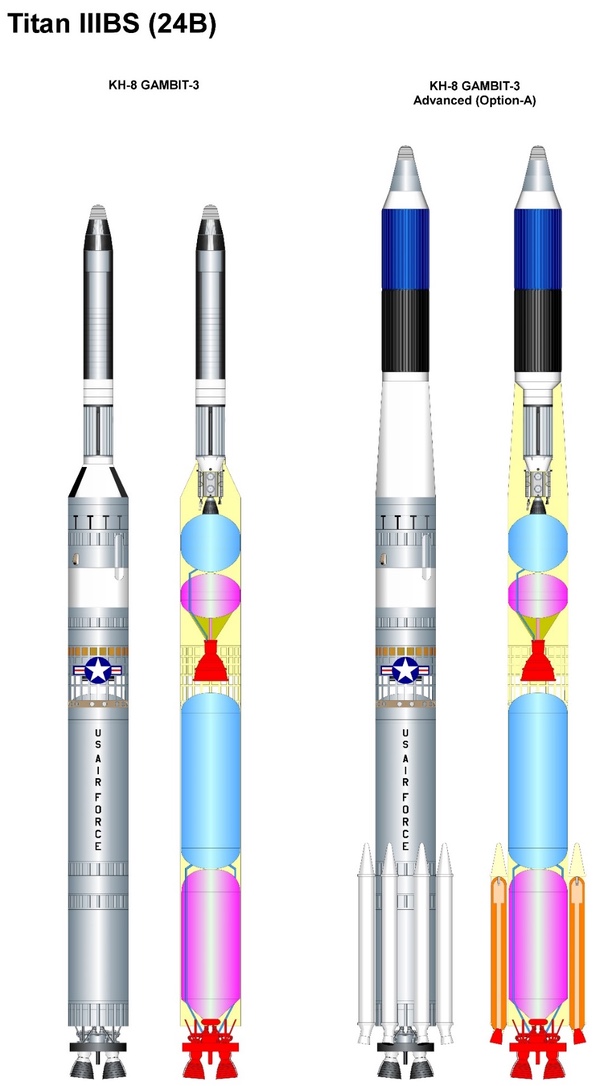 Gambit-3/Titan IIIB vs Advanced Gambit/Titan IIIBS-24B (credit: Giuseppe De Chiara) |
| Do the Gambit NRO archives hold any more surprises? |
The timing of this project may be the result of the loss of the VHR images that would have been produced by the MOL project. The Hexagon KH-9 camera can be considered to be a replacement for the Corona series. As Day pointed out in his VHR essay, its role was that of wide-angle search. In this essay, he discusses the Hexador proposal that would have combined the Dorian optics with Hexagon’s satellite bus and film-return capsules. The newly released NRO documents illustrate how the agency, in addition, considered integrating Dorian-like optics with the Gambit-3 vehicle.
The Advanced variant is another hidden chapter in the Gambit program. The author wrote a review of another such project, the Upward lunar mapper, published recently in Quest [1]. Do the Gambit NRO archives hold any more surprises?
References
- Horzempa, Philip. “Gambit to the Moon: Project Upward.” Quest: The History of Spaceflight Quarterly 27, no. 3 (2020): 9-34
Note: we are using a new commenting system, which may require you to create a new account.
